Have Questions or Comments? Please ask your questions in the comments section below. We attempt to respond to ALL questions or comments.
7 Keys to Win 90% of Listings from Real Estate Seller Leads
Caroline: Hi, I’m Caroline Springer. This is the next session of Get Sellers Calling You with Beatty Carmichael. Beatty is the CEO of Master Grabber and the creator of Agent Dominator. He is also one of the top marketing experts in the real estate field. Today we are going to be talking about the topic of how to follow through with seller leads and the “7 Ways to Win 90 Percent of Listings from Seller Leads.” We’ve been going through a series on the top ways to identify seller leads so this is a continuation from there. Just a reminder for those of you who are on the live call, we do have the lines muted, but we will open them up for questions and answers at the end of the call. So welcome, Beatty. I’m excited to continue on with our conversation.
Beatty: Well, thank you. I’m excited to share as well. I think this will be a great call.
Caroline: I do as well. I know over the past several weeks we’ve been going through the top 5 ways to identify seller leads and I know we dug into a lot of great content. There is so much meat out there to explore and talk through in regard to that. I think this is going to be really informational, just to go through practically how to follow through on those seller leads. I know you have a lot of wisdom on that.
Technically, the title for today is the “7 Keys to Win 90 Percent of Listings from Seller Leads,” but do you want to explain what you really mean by that?
Beatty: Yes, so let me kind of back up and take you backwards for just a moment. When I started working with real estate agents, it was in 2012. At that time, the only thing we focused on was seller leads, identifying sellers in a geographic farm so that those agents could then go and capture them. We modeled a follow-up process based on follow ups that had already proven successful in the field with a lot of large organizations. That was the follow-up process that we had our clients use. As we started to analyze it, what we found was that the average agent following this process won 10% of the listings that came on the market.
Basically, here is what we did. We know all the leads that we are generating, so let’s see how many actually go on the market. We are getting really strong numbers like 1/3 or a little more of the leads go on the market the first year. We look at the leads and how many of those our clients got. It was only about 1 out of 10. So we started scratching our heads and saying, “Well, that’s not good enough. Something is missing.”
Fast forward. I was talking to a large, regional brokerage down in Florida not long ago. They had generated something like 12,000 seller leads through a process they were working on in the past year. They had a group of agents that were following up with them. In their study, those agents won 10% of the listings that came on the market. So we now have two studies that say this is generally the typical win rate because they were using a completely different follow-up process than what our clients were using early on and they were getting essentially the same percentage conversation. But then, over the years, we started to really analyze what causes a seller lead to choose you over someone else. That stuff actually lead into what we do now, which is what we call Agent Dominator. This is in the early stages.
What we found is that by changing some things that the clients who implemented these changes were actually getting around 90% if not 100% of the listings that came on the market. The changes are not all that difficult. It’s just one of those things that no one was doing at the time. We said let’s try this and all of a sudden it works. So that’s kind of the background of the title of this call and there are basically about 7 different things that, if you do these properly, you will win about 90% of the seller leads that come on the market that you work with.
Caroline: Wow. Well, that sounds easy enough, just 7 things to do to have exponential increase in turning around that percentage. I think that will be informational to share what you’ve seen in those studies, even just small things. I think it is true for a lot of things in life, especially in marketing. I know making a quick, few, small changes can make a big difference in those results. Let’s get started.
Beatty: While we are on that topic. Sometimes you cause me to think of things that are fun tidbits. So here is a fun tidbit about how sometimes it’s just the little things that make a huge difference. You’ll probably hear me use this a number of times in the future as well because it’s a fundamental concept in marketing. It is the power of how you articulate something.
A few years back, a man writes and sells a lot of e-books and makes a lot of money from it so he decided to write a book on dating. He titled his book, How Not to Be Lonely. He put it up on the market. He promoted it out on his database and all the different channels and it just didn’t sell. He started scratching his head and thinking, “This is crazy because all of my e-books sell.” So he started to analyze it and he made one, little change. He changed the title… and by the way, this is the cool thing about marketing. It’s not the content that did not sell, it’s the title. So often, as realtors, we think it’s what we do on the inside, how good we are. That’s not what really determines it. Sometimes it’s the perception of what’s on the inside.
So he changed the title of the book by changing one word. He added the word “tonight” – How Not to Be Lonely Tonight. And that book started selling like hotcakes. So you are right. Sometimes it’s just the little things that you do that make a huge difference in results. I digress, but I did want to get that story out there.
Caroline: I love all of your tidbits and stories. They paint a picture and help bring a good backdrop to what you are about to share. I love it. Do you want to go through each one of those 7 keys or do you have a backdrop to the studies of how you got there? I’m very curious.
Beatty: I think I would like to set the stage before we get to the keys. Sometimes knowing how to do something is great, but until you understand why you do it, the how doesn’t really make all that big of a difference. In fact, I remember years back I was in a business. It was a group of independent business owners. One of these leaders leading the group was a very wealthy multi-millionaire. His wife’s credit card bill (just for fun stuff) was $20,000 or $30,000 a month. This is back in the 1980s or early 90s, so back when that was a lot of money. I know it’s a lot now but it was a lot more back then. It was no big deal for them. It was part of their lifestyle. He was sharing, in terms of building a business, he had a saying that he always loved: “The facts don’t matter until you understand why.” The process doesn’t matter why until we establish the reason why we need to be doing this.
With that as kind of the lead in, I wanted to talk about the real simple thing: The fortune is in the follow through. This is true in whatever you do, but especially if you are working with leads. Seller leads, for the purpose of this discussion, is not that person from your warm market who calls you up and says, “Hey Caroline, I’m thinking about selling. Can you come talk with me?” That’s not a seller lead. That’s a “come list me now” phone call. I’m talking about a seller lead. A seller lead is someone that, through some form of marketing, you have identified as someone who is thinking about or at least indicated that they might be thinking about selling. It might be that you are thinking about using a home valuation website and you are promoting that. It might be that you are doing Facebook marketing, talking about if you are thinking about selling go to this place and fill out this form. It might be that you are using some form of postcard and someone indicates interest. Whatever it is, it’s a lead that all we have is an indication that they might be thinking about selling.
The real key is that the fortune is in the follow through. If you have a poor follow through method, and very importantly, if you have an inconsistent, unstructured, non-deliberate follow through method, then you are not going to get many of those leads. It’s really in that. It’s also the attitude. To kind of put it in perspective. A lot of time people will spend thousands of dollars to generate leads, then they try to pinch pennies in the follow up. But that’s just the opposite way of how you need to be doing it. If you spent thousands of dollars to generate these seller leads, the last thing you want to do is go cheap on the follow through because the follow through is where you are going to actually make your money. Is this kind of making sense, Caroline?
Caroline: Absolutely. I think that definitely makes a lot of sense and something that I’ve heard and seen realtors do myself. I think that’s a natural thing to do, to think that oh they are thinking about selling so it seems like the work is already done. But really, that’s just setting the foundation of what you need to do in order to really convert them, which is probably where that discrepancy comes from, 10% to 90%.
Beatty: So don’t shortcut your success in converting them. That’s kind of the message I want to get across. Let’s talk about expectations of what is actually there and then let me walk you through the 7 things that we’ve found that consistently win those sales.
As we’ve analyzed seller leads, we’ve found something really interesting. When we generate seller leads, we generate them in a geographic farm using a certain process. We build up a data profile of what goes on based entirely on that single process of what we do. We don’t really have a whole lot of perspective outside of how we do it to determine if our data is normal or unique to the process that we did. What is interesting is that in this case study that this large brokerage in Florida did, they used a completely different set of processes to generate seller leads and their conclusion on the conversion of those leads that actually went on the market exactly match the data that we generated ourselves.
Now I have two data points that point to the same numbers. The information I’m going to give you now is going to be fairly accurate across the board. What that means is when you generate a seller lead, what is really the potential in that list? You’ll need to listen to the podcasts we did earlier if you haven’t, especially if you are using a home valuation website process to generate leads, you definitely need to listen to that podcast we did because we talk about how to do it right or how to do it wrong. How to get positive leads and not a bunch of false positive leads. Assuming that we’ve generated the seller leads right, here is essentially what you can expect.
Out of all of your leads, 1/6 of them will go on the market within six months from the time that you identify them. Let’s put this in real simple numbers. You generate 60 leads. That means 10 of those leads will hit the market within six months from the time that they identified themselves as a lead. Another 1/6 of them, or another 10 of those 60, will go on the market in the second six months. So you’ve got the first six months, 1/6. You’ve got the second six months, 1/6. And that’s 1/3 of all the leads you generate that will typically list their home with somebody in that first year. Then you have another 1/3 and that other 1/3 will typically go on the market sometime in the following 18-24 months. So you are looking at 2/3 of all the leads you identify going on the market somewhere within two to three years with a bulk of them going on the market within the first year.
What this means is, you’ve got a really high value target. You’ve got a target that you’ve done the work to generate. You know they are going on the market, so now these listings are yours to lose. And because it’s such a high percentage, because out of those 60 leads, 40 of them are going to be hitting the market within two to three years. It means you can afford to spend a lot of money toward that whole group of 60 to get 40 sales. In your experience, Caroline, what would you say is the average seller side sales commission for most agents out there? What would you think? $6,000? $7,000?
Caroline: I was going to say $10,000, but I guess I was shooting a little high.
Beatty: The average sales price is probably about $250,000 roughly in the nation. So that’s about $7,000 right there, plus or minus. So let’s take $7,000. $7,000 times 40 sales is how much?
Caroline: $280,000.
Beatty: So you have $280,000 commission at stake to target 60 leads. What if you spent $10,000 targeting and following up with those 60 leads? Would that be too much money?
Caroline: No, absolutely not, especially with that kind of turn around.
Beatty: What if you spent $30,000 following up with those 60 leads? Is that too much money to generate $280,000?
Caroline: Again, I wouldn’t think so.
Beatty: So here is the key that I want to really emphasize. Don’t go cheap on following up with your seller leads because the reward is so huge if you do it right. It’s worth doing it right because the reward is so huge.
Let’s talk about how to do this. I want to divide the follow up, these 7 things that we are going to do, into two categories, what I call the early-on follow up and then what I’ll call the ongoing follow up. The early-on follow up is those things that you do right up front and it’s going to be a lot higher emphasis and a lot more effort because you’ve got to introduce yourself to that lead. Once you introduce yourself to that lead, then the ongoing follow up is going to be a lot easier. We’ll take it in those two things: early-on and ongoing.
The early-on is going to be characterized by high touch / high frequency. In other words, you generated a lead; that lead likely has never met you. So in a very short period of time, you’ve got to touch it a lot with a real high touch so that they get to know you and trust you. Once you’ve established that trust level, that familiarity, that relationship, then you don’t need quite so high frequency, quite so high touch.
There is a group out there that has a program and I love it. They call it the 8 by 8. What they mean is that when you meet a new person, you touch them 8 times in 8 weeks. What they are talking about is high frequency / high touch to jumpstart that relationship. That’s what we find. Here is the model that we identify, that we’ve tested that generates 90% to maybe as much as 100% of winning the seller leads that come on the market.
The first thing is a personal touch. Let’s look at one quick study. I’ve seen this in three groups of data points and they all point to the same thing. The net of the study is this: If someone has met you, face to face, and they can put a face, a voice, a personality, a look and a feel to you, then they are 8 to 10 times more likely to do business with you than if they had never met you before. So the most important part of the early-on stage is that you meet them face to face, if at all possible. If not possible, the second best thing is a phone call. If it’s not possible for that, it’s a handwritten note. This is where I say, don’t shortcut it. We’ve taught our clients for years, when you get that seller lead, go knock on the door and keep returning until you catch them at home and you are able to meet them personally. Here is where a lot of our clients go, “Well, I try. I’ve gone by two or three times and they are never there. I just can’t do it.” That’s shortcutting the process. That’s going cheap. And that’s losing a sale.
We have another set of clients who meet 100% of every seller lead that we generate with them. So I ask them, “Well, what do you do?” They say, “I just keep going back.” I ask, “Well, what do you mean?” They say, “I go back every day. I go on Saturday mornings. I’ll go on Saturday afternoons. I’ll go on Sunday afternoons. I will keep going back until I catch them.” In other words, they are determined to meet them. That’s what I’m talking about.
Then the question is, what do you do when you get there? Do not carry your listing agreement and say, “Hi! I understand you are thinking about selling your home. I’d like to do a listing appointment with you and sell your home for you.” Don’t do that, because that is not the purpose. That’s being pushy. When you go meet with them, the idea is to build a relationship. Just introduce yourself. In order to do that, let me add a few more elements into what you are going to do. It’s this initial meeting that is the most important thing.
Before you do the initial meeting you want to get a gift. The gift may be a nice box of cookies, or a bag of gourmet brownies. Things of that sort. Keep in mind that some people don’t like a lot of sugar. Some people don’t like sweets. Some people are allergic to some of these things. Some people, believe it or not, stay away from chocolate. Try to identify something that is edible, but that most people will enjoy. One of our top clients, who makes close to 1 million dollars a year, goes down to Costco and buys the tin of butter cookies. They are like $10.00 each, but his thought is, “Everyone loves butter cookies.” It’s a nice welcomed gift. It’s in a tin as opposed to a plastic bag of some sort. You’ll get a higher percentage of people who will actually eat it and, therefore, appreciate it. You want to get a gift. The reason for the gift is there is a simple concept called, “The Law of Reciprocity.” If I do something nice for you, then you are going to reciprocate and do something nice for me. You don’t even think about it; it’s just unconscious. But you appreciate what I did for you and so you naturally will return it by doing something nice for me. So dropping off a gift, having a gift with you, goes a long way in terms of establishing that relationship. So you want to have a gift.
The next thing you want to do before you go is you want to create what we call a premarketing pack. Now we actually provide this for our clients. A premarketing pack is essentially taking the concept of your listing presentation where you cover all of the reasons why someone should choose you and you put it in written form that is real easy to read, real easy to thumb through and it’s all the reasons why I should choose you as an agent. It’s going to talk about your sales. It’s going to talk about your integrity. It’s going to talk about your negotiation skills. It’s going to talk about your marketing. It’s going to show examples of sales you made, ideally maybe examples of the sales you made that others tried to but they couldn’t (i.e. it was an expired sale that you were able to do great things with). It’s going to have testimonials. In other words, it’s a sales and marketing piece for you.
So now, with that kind of set up, what happens is, you go knock on the door. You introduce yourself. If I were the realtor and you were the seller lead, I’m going to knock on the door and you are going to answer. I’m going to say, “Hi. Caroline?” “Yes.” Actually, I may not even say “Hi Caroline” because I don’t want you to know that I know who you are. So you answer the door and you are a little cautious. I’m going to have my nametag on so people can see my name and know that I’m a real estate agent. I’m going to say, “Hey. I’m Beatty Carmichael. I’m a real estate agent with such and such company. I’m just out introducing myself to homeowners in the community and I just wanted to introduce myself to you and give you a gift and some information. You are going to say, “Oh thank you, that’s so nice.” I’m just going to chit chat. “Have you all lived here long? Have you seen me around? I’m around all the time. You haven’t? Rats! I need to get out more often.” I’m going to do something fun. I find that if I can get you to laugh, then I’ve got you to trust me and like me.
We are just going to visit. I’m going to give you the box of cookies and say, “I wanted to bring you a little gift, a box of butter cookies. I hope you and your family enjoy them. Y’all can eat butter cookies, right? Okay, good. Because some people may not. Here is some information about me. If you are thinking about buying or selling a home or know someone who is, I’d love to give you information on what sets me apart and why I’m able to do such a better job for my clients than the typical agent, so I’m going to give you my premarketing pack.”
Somewhere in that short conversation, I’m going to ask as I’m on the way out, I’m going to say, “Hey it was great to meet you and if I can ever help you guys with any real estate needs, my card is in there, please give me a call.” And you go, “I sure will.” “Hey, thank you so much.” As I’m leaving, almost as an aside, I’m going to go, “Oh, one last thing. Are you guys thinking about selling your home anytime soon? If you are, I’ve got some information in my car that I could leave with you that would help you better prepare your home so that you can do a better job in getting more money for it.”
Now I’m going to offer you one more piece of information, almost as an aside. And, if you are thinking about selling, you are probably going to go, “Yes, we might be. I’d love to get some of that information.” So now what’s happened is, I’ve confirmed that you are thinking about selling. I might even ask, “What type of timeframe are y’all thinking about?” If I’ve built up the trust, then you are going to be more responsive.
It’s a process. We’ve had people try to take the same approach, Caroline, and rather than building up trust, they come in for the jugular. They’ve got a listing agreement. “Hey, I understand you may be thinking about selling. I’d like to list your home and I can do a great job.” Let’s say I were to come to your house with that type of approach, as a total stranger. I knock on your door. You answer it. “Hey, I’m Beatty Carmichael. I’m a real estate agent in this neighborhood and I understand that you might be thinking about selling your home. I would like to list it for you and I can get you more money.” If I came with that approach, how might that make you respond?
Caroline: Well, you know, just a little bit of big brother. How do they know I’m thinking about selling my home? I feel like immediately there will definitely be some walls up and a little distrust. Even just thinking about in that moment, I was quizzing myself and felt distrust in my heart. Ewww, I don’t know about this person.
Beatty: That’s right. So are you going to say, “Yes, I am thinking about selling?” Or are you going to say, “No, we aren’t thinking about selling?”
Caroline I’m going to say no, absolutely.
Beatty: There you go. So when we have clients who take that approach, that’s the response they get from all of their seller leads because they do it wrong. But when you take the more gentle approach, “I’m just there to build a relationship and introduce myself because I work in the area,” then what happens is you’ll find that they begin to trust you. Then, when you come back, right before you are about to leave, and say, “Oh by the way, are you guys thinking about selling?” you are more likely to get an honest answer. Then you can help them further. That’s how you start to do it. That’s the first part of the early-on.
Then there are a couple other parts of the early-on high touch / high frequency. So that’s a high touch. Personal, with a gift, with information that will help them in the process of selecting an agent. As soon as you leave, you want to write a handwritten note on a personal card of some sort. “Caroline, it was great meeting you. Hope you and your family enjoy the butter cookies. Again, if I can help in any way with any real estate needs or anything, such as contractors to help with all sorts of things around the house, just let me know.” I’m going to put my card in there. So now there is a personal note, a little thank you note. Probably a week later, I’m going to send you some sort of postcard. Maybe it’s a just sold postcard or anything like that. And for the next couple of weeks, you are going to get something from me every single week because I want you to remember me and I want to impress upon you what I do as an agent. Does that make sense so far? That those are the early-on touches?
Caroline: Absolutely. I think too that those reiterating touches will definitely keep an agent top of mind. They are not going to forget that experience. When they think of a realtor, they are going to think of you.
Beatty: Yes, exactly. So that is the first 4 of the 7 things. #1: A personal touch. #2: A “box of cookies” type of gift. #3: Use the premarketing pack. #4: A few more personal touches early-on. That’s 4 of the 7. That is the most important part out of the entire process. Most agents can figure out how to somehow touch a prospect. But what we’ve found that the one thing that changed between the 10%ers and the 90%ers, in terms of winning those listings, is that it was the early-on stuff. Everything else remained the same. So the early-on stuff is where the rubber is going to meet the road in winning the relationship.
Now that we have that, then the final 3 things is you have to stay at it ongoing. Keep in mind, 1/6 of your listings come on the market in the first six months. Another 1/6 will go on the market in the second six months. Then you’ve got 1/3 that is going to go on the market in the next year and a half or so. So it’s important that you stay always in front of them with what I call “Reasons Why” to remember you.
There are three things to do on that. You want to mail them a postcard every two to three weeks for next two to three years. These are premium leads. Don’t shortcut this one. Send a postcard very two to three weeks. That’s 18 – 24 times a year you want to be in the mailbox in front of them. So that’s #5.
#6 out of the 7 things is you want to use what I call the “Why Choose Me” content. You take your listing presentation and break it down. It’s basically the same stuff you put in the premarketing packet, but then you rearticulate it bit by bit, each bit on a single postcard. So now every postcard is sharing content as to why they should trust you over someone else. So every postcard is explaining your inside reality so they begin to get more confident with your expertise.
So the 7th thing that you do is periodically, I’d say every six months. Pick up the phone and make a personal phone call or hand write a personal note or drop by and do a face visit. In other words, stay personal in front of them.
If you do those 7 things, that’s the pattern that we establish with our clients that when they started to do it they were now getting a 90% win rate off of those sellers leads. It’s really a powerful process.
Caroline: Absolutely. I think even just thinking of myself as a homeowner and that scenario, it just shows the consistency and how tirelessly and hard an agent will work to make themselves known and to continue that relationship. I know for myself that is even something I would think about. If they are going to work this hard to maintain a relationship with me, how much harder are they going to work to sell my home? I think it absolutely makes sense why there would be such a huge turnaround from implementing those small things.
Beatty: Yes. I know we are over time, but let me make one comment on what you mentioned. I invited the number 1 selling agent in my suburban city over to talk with me about possibly selling my home. I told him that we are thinking about putting our home on the market and I have some questions. He came over. I made it real clear that I’m not selling now. This is like for maybe eight months from now, but I wanted to know things to do to prep to make the move happen. We talked a little bit and he left. This is the number 1 selling agent in my area. I never got a phone call from him saying, “Thanks for allowing me to come over.” I never got a hand written note. I never even got anything. Literally, total silence. Think about the stupidity. But this is what most agents do because they don’t understand marketing. Here I am in a half million dollar home saying, “I’m going to sell.” That’s a $ 15,000 commission if I do my math right. And I never once get any follow up from this guy. So guess which agent I chose? Not him. So you are right, when you do the follow up, they are saying, “Boy, this guy is on top of it. He’s aggressive. I want an aggressive agent selling my house.” All these things give those people confidence to want to do something with you.
Caroline: I love all of your stories. They help solidify and bring it all together. I do think we are out of time so we need to wrap up. Beatty, thank you so much for your time and expertise today. I think it was a great call. We went through a lot of great content. Before we close out of the call, do you have anything else you would like to share?
Beatty: Yes. All of the stuff that I’m sharing and what we’ve developed to follow up with these seller leads does amazing wonders, doubling and tripling sales and referrals from your personal list and contacts. We actually developed a product called Agent Dominator. If anyone out there is listening and you want to learn how to increase sales and referrals from your personal contacts, and especially you want to have it done for you so you can focus on selling and have someone else handle all the nitty-gritty details of making it all happen, then check us out on the web at AgentDominator.net and you can see what’s going on. That’s the final thing I wanted to share.
Caroline: Okay, great. That’s all we have today. Thank you again, Beatty, for sharing.
Beatty: Thank you. Have a great day!
p012

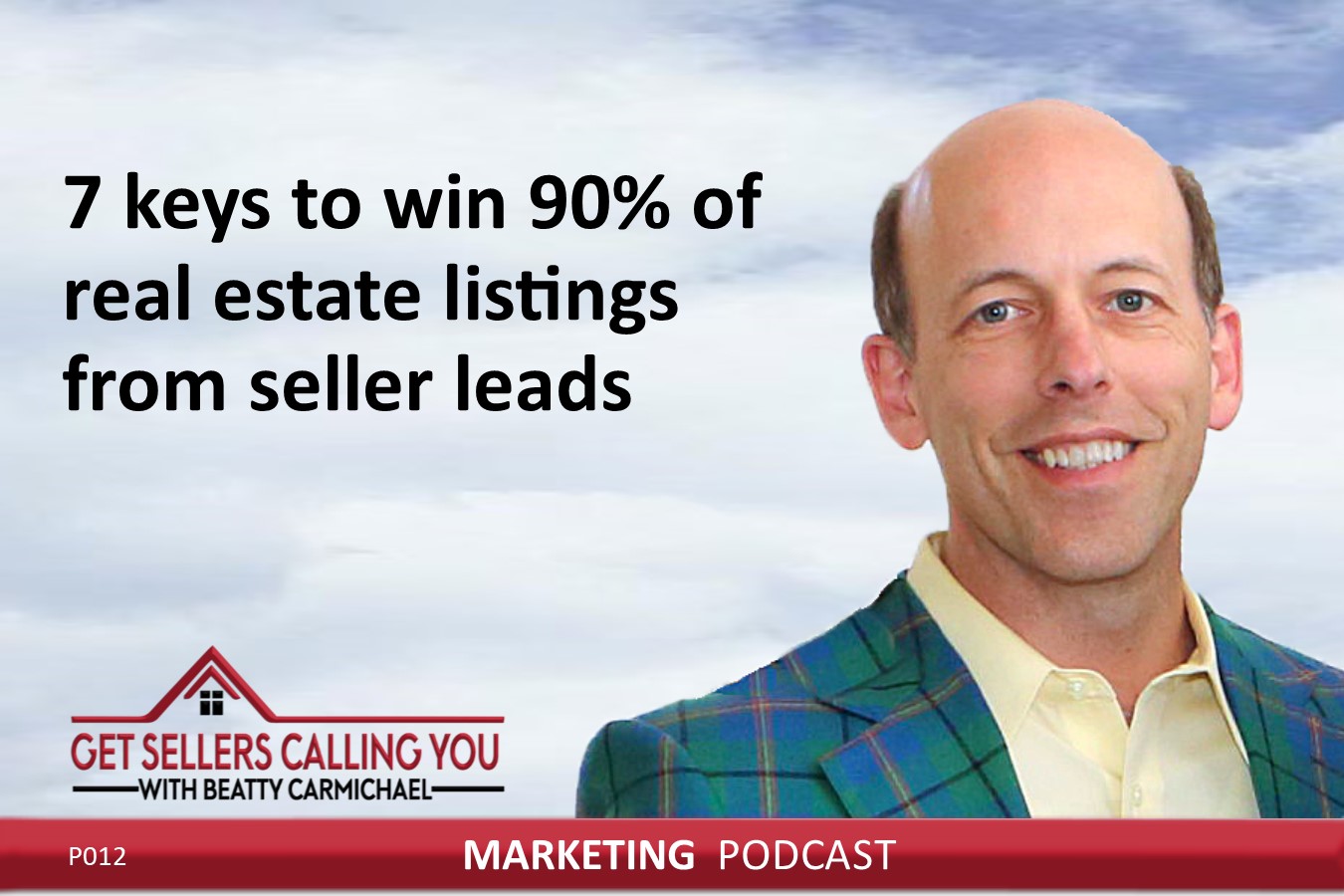
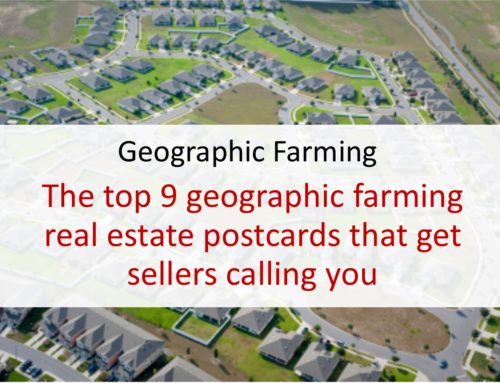
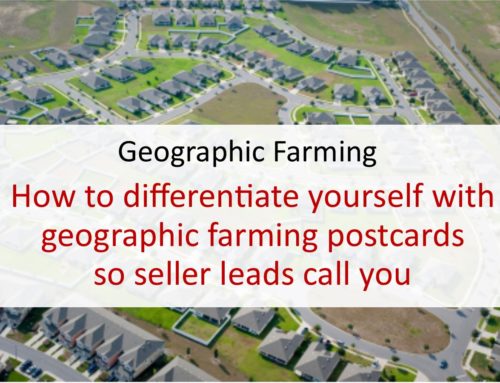
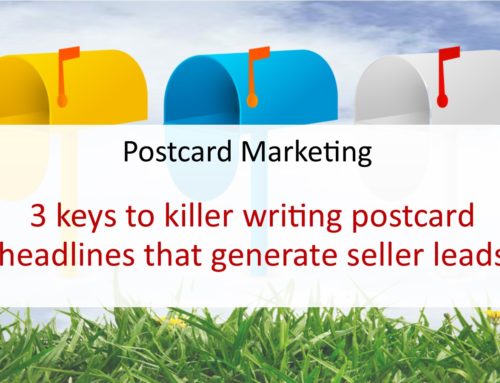
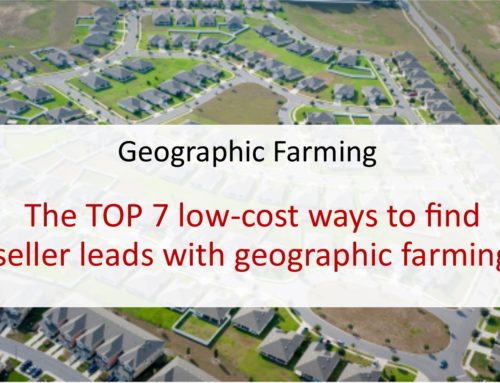
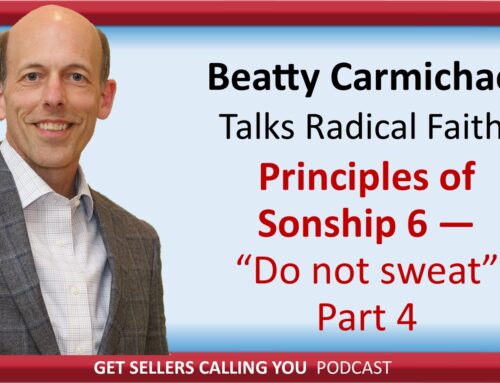

Leave A Comment